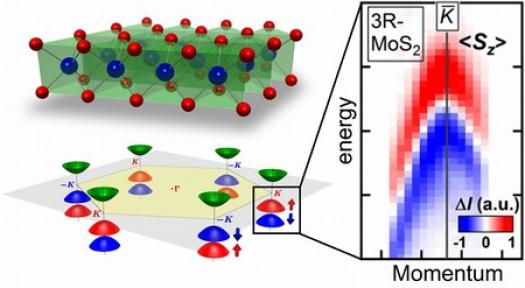Molybdenum disulfide opens door to low energy consumption electronics

Group lead by Professor Yoshihiro Iwasa from the Quantum-Phase Electronics Centre, The University of Tokyo, also a team leader in RIKEN Center for Emergent Matter Science, has uncovered peculiar electronic properties of molybdenum disulfide, which is an emergent two dimensional crystal beyond graphene, as a candidate materials for"valleytronics", a new guiding principle toward the low energy consumption electronics.
Recently, there are many concepts proposed aiming at low energy consumption electronics. One of the most fundamental ones rather than the improvements of existing technologies is to replace "electrical charge" with "something else" to suppress energy losses by heat generated by electrical current flow. A well known example is "spintronics", which manipulates spins of electrons. Valley is another degree of freedom of electrons that can be found in particular materials, and its Manipulatiion is theoretically predicted and attracting as a new technology called "valleytronics".
Research group uncovered strong coupling between valley and spin by utilizing spin- and angle-resolved photoemission spectroscopy and circularly polarized photoluminescence spectroscopy on molybdenum disulfid. The present results proved the theoretical prediction and paves an important step toward valleytronics based on molybdenum disulfide, opening a door to next-generation low energy consumption electronics.
This work was done in collaboration with the groups of Associate Professor Kyoko Ishizaka from Department of Applied Physics, the University of Tokyo, Dr. Ryotaro Arita from First-Principles Materials Science Research Team, RIKEN Center for Emergent Matter Science, and Associate Professor Taichi Okuda from Hiroshima Synchrotron Radiation Center, Hiroshima University.

































